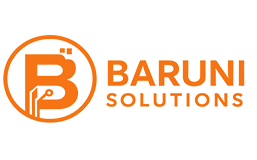Trusted by startups and Fortune companies
Empower Your ISV Journey with Our Expertise
We are renowned for our excellence in software development, particularly in serving Independent Software Vendors (ISVs) and product development firms.
With our extensive expertise and a committed team of over 650 developers, we deliver customized solutions that enhance your product’s value and performance.
- Trusted by Startups and Fortune 500 companies alike
- From idea to deployment, we manage every step
- Global presence ensures time-zone friendly interactions
- Implementing top-tier data security protocols
- On-time delivery with no surprises
- First-time-right approach ensures efficiency
![]()
Ready to Innovate?
Let's co-create groundbreaking products together, merging your vision with our expertise for unparalleled results.
Get StartedUnderstanding Software Product Development for ISVs
Guide Topics
Software Development Process for ISVs
The software development journey for Independent Software Vendors (ISVs) typically adheres to a well-defined framework, encompassing various stages to ensure a systematic progression. Initially, the process begins with idea generation and strategic planning, followed by a thorough analysis of requirements to define the project scope. Subsequently, the design phase focuses on crafting intuitive user interfaces and engaging user experiences. As development commences, agile methodologies are often employed for iterative development and rapid prototyping. Rigorous testing and quality assurance procedures are then implemented to ensure product reliability and performance.
Upon successful completion, the software undergoes deployment, followed by its release and distribution to the target market. Post-launch, dedicated support and maintenance services are provided to address user inquiries and ensure ongoing functionality. Documentation and training materials are also prepared to facilitate user adoption and comprehension. Continuous monitoring and feedback mechanisms enable adjustments and improvements, fostering business growth and adaptation to evolving market demands.
Integrating Modern Software with Legacy Systems
Integrating modern software with legacy systems presents compatibility challenges, as older systems may lack necessary interfaces
This disparity often leads to data silos, hindering operational efficiency and decision-making.
Solutions include middleware for bridging communication gaps, API development for standardized data exchange, and data migration tools to facilitate secure transfer.
Inadequate integration can lead to data silos, where information is trapped in separate systems. This fragmentation can result in operational inefficiencies, data redundancy, and difficulties in decision-making.
Implementing these solutions ensures seamless integration, mitigating inefficiencies and maximizing the value of both modern and legacy systems.
Emphasizing Security in Software Development
Security is crucial for protecting user and business data, ensuring compliance and trust.
Breaches have serious consequences, impacting reputation and legal obligations.
Best practices include encryption for data protection, regular audits to detect vulnerabilities, and multi-factor authentication to enhance user access security.
hese measures bolster defenses against threats and uphold the integrity of systems and information.
Ensuring Software Compatibility Across Platforms
Cross-platform challenges arise due to diverse user devices and operating systems, demanding consistent user experiences despite differences in screen sizes and hardware capabilities.
Solutions include responsive design principles for adaptability, cross-platform development tools like React Native or Flutter for simultaneous multi-platform deployment, and regular testing across devices and operating systems to ensure consistent performance and user satisfaction
ISVs encounter various challenges
ISVs encounter challenges such as market competition, changing customer needs, technical complexity, and time-to-market pressures. Solutions include focusing on unique value propositions, staying updated with customer requirements, investing in skilled resources, adopting modern development methodologies, and leveraging reusable components to expedite development
These strategies enable ISVs to navigate challenges effectively and deliver competitive products in a timely manner
Current trends in ISVs and product development industry
Emerging trends in ISVs and the product development industry include the rise of cloud-based solutions for scalability and accessibility, integration of Artificial Intelligence and Machine Learning for automation and data-driven insights, seamless integration with Internet of Things devices for improved automation and real-time data processing, and adoption of subscription- based pricing models for flexibility and recurring revenue streams .
Agile methodologies' impact on product development
Agile methodologies offer a dynamic approach to software development, particularly advantageous for ISVs and product projects. Key advantages include adaptability, enabling swift response to market shifts through ongoing collaboration and feedback. Agile promotes faster time-to-market with incremental development, facilitating early customer validation. Moreover, its customer-centric focus ensures alignment with customer requirements, enhancing satisfaction and market fit. Agile also fosters transparent, cross-functional teamwork, promoting effective communication and creativity for enhanced productivity.
- Advanced Technologies and Their Role in ISVs: Cutting-edge technologies empower ISVs with versatile capabilities.
- AI/ML (Artificial Intelligence and Machine Learning): rive predictive features, data analytics, and process automation.
- Big Data Analytics: Harness insights from vast datasets for real-time analysis.
- IoT (Internet of Things): Extend solutions with data-driven automation and predictive maintenance.
- Blockchain: Ensure secure data transactions and sharing integrity.
- Cloud Computing: Scale products, facilitate remote collaboration, and enhance accessibility.
- AR/VR: Elevate user experiences through immersive interactions and virtual simulations.
- Cybersecurity Solutions: Safeguard products and user data from cyber threats.
- RPA: Enable rapid communication and responsive data processing.
- 5G Technology: Streamline operations through task automation and efficiency enhancements.
- Quantum Computing: Leverage advanced computational capabilities for complex tasks.
- Edge Computing: Support real-time decision-making at network edges for IoT applications.
- Edge Computing: Support real-time decision-making at network edges for IoT applications
- NLP: Analyze text, automate tasks, and enhance customer service with chatbots.
- Biometrics and Facial Recognition: Strengthen security and access controls with biometric authentication.
- Robotics and Automation: Integrate software with physical device control and process automation.
Frequently Asked Questions
Client Feedback on Our Services
We sincerely appreciate the trust our clients place in us and take pride in providing quality solutions that surpass their expectations. Here's what some of them have to say about their experiences:






